Best Tips for Impressive Supply Chain Management
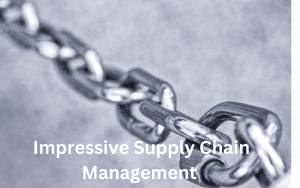
The old method of supply chain management (SCM) must be revised in light of the growing number of disruptions in today’s global industrial scene. Impressive supply chain management needs more challenging management practises, flexibility and agility.
To keep up with consumers’ ever-evolving wants and needs, supply networks must be malleable and responsive. Embracing best practices is vital for solving these difficulties efficiently, enhancing efficiency, lowering costs and guaranteeing the seamless running of all supply chain operations.
Below are the crucial SCM best practices that may help you build a more reliable supply chain.
What is Supply Chain Management (SCM)
Supply chain management (SCM) encompasses the effective coordination and integration of various activities associated with the production and distribution of goods or services.
These activities encompass the whole process, starting from the acquisition of raw materials or inputs and concluding with the final delivery of the finished product to the end consumer.
While logistics is an integral part of the supply chain, it is often misunderstood as the entire chain. Material handling and software for all parties engaged in product or service production, order fulfilment, and information tracking, such as suppliers, manufacturers, wholesalers, transportation and logistics providers, and retailers, are all part of modern digitally based SCM systems.
Supply chain operations cover procurement, product lifecycle management, supply chain planning (including inventory planning and the maintenance of corporate assets and manufacturing lines), logistics (including transportation and fleet management) and order management.
7 C’s of Corporate Integrity Viewed from a Supply Chain Perspective
According to new research, John Bell wrote an essay for the university’s website. We must break free from the all-or-nothing mindset that pits profit against sustainability. This creates a disconnect in values and culture within businesses.” He characterizes it as more of a journey than an endpoint.
An example of this is the paper “Journeys, Not Destinations: Theorizing a Process View of Supply Chain Integrity,” which adapts Thomas Maak’s “7 C’s” of corporate integrity for use in the supply chain setting.
- Commitment is deciding to meet relevant client demands and overcoming consumer difficulties through products and services. According to SCI, a company’s obligation extends to its suppliers and other stakeholders as well.
- The content includes the specification of guiding principles for ethical and responsible behaviour as well as the application of those values to partners in the supply chain.
- Coherence: Maintaining one’s ideals in the face of hardship or after enduring an external shock is an example of coherence.
- The context is established by actively seeking out supply chain partners that share similar values in order to commit to adhering to common ethical standards.
- Conduct: In order to put guiding concepts into action, behaviour necessitates the use of particular practises. These procedures might either be preventative or remedial.
- Being consistent is following through on commitments and producing the desired results.
- Continuity: A commitment to doing the right thing over the long haul, as demonstrated by sustained efforts that have been ongoing for several years, is an expression of continuity.
The Focus of Modern SCM is Squarely on the Buyer.


Traditionally, SCM has focused on doing more with less. These requirements remain the same, but what has shifted is the customer’s position of prominence in determining the focus of supply chain management. Someone once remarked, “Customer experiences live and die in the supply chain.”
The key to retaining customers is meeting their needs in a timely and reliable manner. The timely delivery of a product to a consumer depends on the smooth coordination of several processes, including procurement of raw materials, production, distribution, and trade and order.
To do this, organizations must look at their supply chains through their consumers’ eyes. It’s not merely about delivering the order to the client on time; it’s about accomplishing everything at the proper moment—before, during, and after order delivery.
The Importance of Flexibility in Supply Chains
The modern supply chain is extensive in scope and dynamic, necessitating flexibility for optimal performance. In the past, supply chains fulfilled company and consumer demands through a beginning-to-end paradigm mostly untouched by change.
The modern shopper may choose from a wide variety of retail outlets, both physical and virtual. They have also become used to increasingly individualized service. An adaptable supply chain will be able to meet such needs.
Not only that, supply chain sourcing has become quite flexible. Changes in the economy and politics, for instance, can have far-reaching effects on the industrial supply chain. Suppose a company can’t receive aluminium from one supplier because of trade policy.
In that case, it needs to be able to switch gears and find another supplier swiftly. Successfully dealing with such a situation requires the flexibility of your supply chain to be quickly reconfigured. Agility is essential to performing these sorts of real-time reconfigurations.
Problems in the supply chain are more than inefficiency and poorly managed costs. Altering conditions can also affect maintaining regulatory compliance.
Your SCM system needs to be adaptable enough to deal with the wide range of regulatory requirements, as well as the constant flux in the supply chain.
With the aid of an intelligent SCM system, you can save time and money while adhering to a wide range of regulations that are subject to constant change.
Best Recruitment Agencies in USA
Explain the Significance of Supply Chain Models.


Successful companies understand the importance of a well-oiled supply chain. Supply chain models are helpful. Each supply chain model is just a different way of arranging the many actors and activities inside the network.
So, why are models of supply chains so essential?
Their assistance in streamlining supply chain processes leads to lower expenses, happier customers, and more money in the company’s coffers. In addition, businesses can adjust their strategies based on the supply chain models they choose.
A company’s success or failure often hinges on the sophistication of its supply chain model. Let’s take a look at several supply chain models and how they’ve helped other businesses.
The fast chain supply chain is a well-liked concept because of its emphasis on swiftly and effectively satisfying consumer demand. This framework is conducive for companies operating in dynamic, competitive markets like the fashion and technology sectors.
Below are Some Model’s
A Model of Continuous Flow
The Continuous Flow concept is focused on sustaining constant and seamless supply chain operations. This model’s efficiency is maximized by preventing variations in supply or demand. Amazon is one firm that is employing this supply chain concept.
Their supply network is intended to provide items continually, with little to no interruptions in supply flow. Because of this, they are able to keep their status as a trusted delivery service without sacrificing speed.
The Quick-Chain Model
The Fast Chain concept prioritizes swiftness in the flow of goods. This concept highlights fast service and adaptability to market shifts. Zara, a clothes shop, is an excellent example of a business that uses this supply chain approach.
They can create and release new fashion trends in a matter of weeks, as opposed to the standard six months followed by most merchants.
Model production Efficient Chain


The Efficient Chain concept seeks to maximize productivity across the supply chain by cutting down on inefficiencies wherever possible. Consider Toyota, which uses this supply chain concept to significant effect with its lean manufacturing approach.
We’re committed to maximizing productivity and minimizing waste in the supply chain. Our top priority is removing anything non-essential.
Model for a Flexible Supply Chain
Agile Supply Networks quickly adapt to changing supply and demand. This necessitates adaptability in both procedures and technology, as well as open lines of Communication among all participants in the supply chain.
Nike is an example of a corporation adopting this supply chain approach, being able to adapt swiftly to changes in consumer demand for its products.
The Digital Version of the Supply Chain
The Virtual supply chain concept is characterized by leveraging virtual technologies, such as cloud computing and data analysis, to improve supply chain operations. This improves supply chain network transparency, Communication, efficiency, and adaptability.
To improve supply chain responsiveness and save costs, companies like Procter & Gamble are adopting this strategy and leveraging virtual supply chain technologies.
Modular Supply Chain Design
In the Custom-configured supply chain approach, the supply chain is tailored to meet the unique needs of each customer. This necessitates close interaction with the consumer base and extensive personalization of services and goods. One firm that uses this supply chain strategy to satisfy consumers’ varying demands is Dell, which offers customizable computer systems.
Model for a Pliable Supply Chain
In order to better respond to market fluctuations and consumer preferences, the Flexible supply chain model prioritizes agility in supply chain management. Hewlett-Packard is an excellent example of a corporation that uses this model of supply chain management because of how it has adapted its supply chain procedures to be more adaptable in the face of fluctuating demand and consumer tastes.
Seven Supply Chain Functions
Although supply chain covers a wide range of careers, it may be broken down into seven main categories: procurement, production, inventory management, demand planning, warehousing, transportation, and customer service. Though they may at first glance seem unrelated, All supply chain facets are crucial and interdependent.
Purchasing:
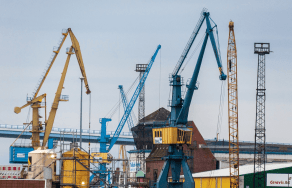

Efficient buying is the key to the successful achievement of organizational objectives. By purchasing the right goods and services To succeed and beat the competition, organizations must prioritize meeting market demands.
Purchasing’s primary goals are to:
- Keep the quality and value of the company’s goods high.
- Reduce the amount of cash that is held in inventory.
- Keep the flow of inputs steady to guarantee the constant flow of outputs.
- Fortify the company’s competitive position.
As the procurement of raw materials and other resources, buying is an integral part of every manufacturing operation. As the economy gets more global, the prospects become even more fascinating.
Manager of materials, head of corporate procurement, coordinator, and analyst. These positions may be based either at an off-site facility, such as a manufacturing factory or in a central office.
Anyone in an organization may be responsible for procuring anything from office supplies to components for aeroplane engines.
“Manufacturing”
The term “manufacturing” refers to the process of making anything, either for personal use or for sale, by means of human labour and mechanical, electrical, chemical, biological, or physicochemical means.
The term “production” can be used to describe a wide variety of human endeavours, from simple manual labour to complex technological processes. However, it is most often used to describe mass manufacturing.
Wholesalers buy these products, and then Certainly. Retailers acquire the products from manufacturers and subsequently distribute them to end-users and consumers, or they may be utilized in the production of more complicated commodities.
Companies reorganizing their production departments have garnered extensive media coverage. However, there are still plenty of open jobs despite this. These include quality assurance (QA) analysts, engineers, plant managers, line workers, machine operators, and production planners and managers at both the corporate and plant levels.
Management of Inventory
Management of Inventory entails all the things you do to make sure you always have enough of everything in stock.
The goal of inventory management is to keep manufacturing, sales, and customer service running smoothly while spending as little as possible. Problems with inventory are a common cause of financial losses and even company bankruptcy, as stock is often the most valuable asset a company has.
Inventory management is essential for any manufacturer, no matter where in the world it may be located. A company’s physical inventory is a crucial asset since, without it, it couldn’t make any sales. It’s critical to have the appropriate product at the right place at the right price, and inventory permits this to occur.
Demand Planning
Demand planning is the practice of anticipating a company’s customers’ needs in order to direct the company’s supply chain and executive management in meeting those needs.
The process of predicting future demand may be done in a number of ways, from making informed predictions to using complex data gleaned from test markets and past sales records.
Production planning, inventory management, estimating future capacity needs, and deciding whether or not to join a new call can all benefit from demand forecasting.
These days, demand planners need to be analytical thinkers with a penchant for computer modelling. It helps if you have a crystal ball. Still, since only some people have the art and science of anticipating what people will purchase, Data analysts determine product components and sales trends.
Warehousing:


Performance of administrative and physical activities involved with the storage of commodities and resources. The tasks of receiving, identifying, inspecting, verifying, storing, retrieving, issuing, etc.
Warehousing has expanded beyond just storing goods despite the common perception that it serves only one purpose. With the advent of mass customization, the warehouse has morphed into a distribution hub that can also do final product customizations, including rebranding, relabelling, and repackaging.
As the last “stop” before reaching the client, the significance of these facilities has increased in order to complete client orders with the correct product at the right time; proper handling, storage, and administration of the items inside these facilities are required.
Transportation
Moving people, animals, and products from one place to another is what we call transportation. Transportation options encompass the sky, the ground, the sea, the cable, the pipeline, and even the void. There are three main subfields within the field:
- infrastructure,
- transportation,
- and operations.
Where the supply chain’s proverbial rubber hits the road is in the transportation function. Even if a business has its stock at the correct location at the right time, it will only reach its customers in a timely manner if it has access to reliable transportation.
In today’s global market, this job is even more vital as it’s more complex than placing a product on a truck and having it delivered. These days, it might arrive at the buyer via container ship, aeroplane, rail, truck, or even Uber vehicle.
Customer Service
In business, satisfying customers is known as “customer service.” Often, customer service takes place when providing customer service; it is possible to conduct transactions in person.
- These transactions may include assisting customers with sales or returns.
- Interactions,
- phone calls,
- automated systems,
- and other channels are all viable options for providing support to customers.
Despite its apparent location at the conclusion of the supply chain, the customer support function is only part of the final step. This role is essential since it serves the consumer by making sure they get what they want when they want it.
Because of the importance of this role, people in it must have the knowledge and abilities to identify and, where feasible, satisfy the demands of their clients.
Tips for Impressive Supply Chain Management
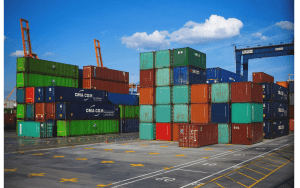

By implementing several tools and strategies, a company may improve supply chain visibility and make better, more well-informed decisions.
Few ideas
Innovate at Scale
Organizations must adopt best practices of Impressive Supply Chain Management that foster cooperation, agility, and continuous improvement to achieve stability and resilience in today’s changing business context. This may lead to a more efficient and responsive supply chain, eventually boosting customer satisfaction and competitive advantage.
The purpose of DHL Supply Chain’s digitalization programme is to establish a portfolio of digitalization solutions that solve difficulties across the supply chain and can be implemented frequently for new and existing clients.
The organization creates playbooks for each new digitalization technology, detailing the proof-of-concept and subsequent implementation steps to help achieve this objective.
Once the solution becomes a standard component of the company’s offering and support is transferred from the digitalization team to operations, the playbook becomes an invaluable resource.
Planning
Supply chain planning (SCP) refers to the deliberate arrangement and coordination of resources to facilitate the seamless and uninterrupted movement of products, services, and information from suppliers to consumers.
Software for constraint planning (SCP) helps businesses successfully plan, simulate many “what if” situations, and respond to real-time client needs despite restrictions.
Despite its vital significance, SCP is often a source of weakness in supply chain management. It involves concerted and organized attempts to deal with issues, including demand forecasting, market research, and the influence of international rules.
SCP’s insights are helpful since they are disseminated across the supply chain and presented to upper management.
Use a Systematic Strategy.
Improvements in the supply chain only emerged from a random use of digital technologies. They are the product of a systematic and rigorous approach to digitization by industry leaders like DHL Supply Chain.
By taking a systematic approach to innovation, DHL Supply Chain can monitor the state of the supply chain technology industry.
Locate and evaluate the most promising vendors and technologies and speed up the process by which these innovations go from proof-of-concept to full-scale implementation across the company’s global infrastructure.
This strategy calls for a committed workforce and an organizational framework that integrates them across departments. Successful commercialization relies on the digitalization team sharing its expertise and methods with the rest of the company at each step of the technology’s lifecycle.
Consistent Communication is also crucial to ensure teams throughout the organization are aware of the technologies going through the process and understand and support the company’s digitalization journey.
Risk Management
Natural catastrophes, geopolitical challenges, cyber hazards, and vendor risks are just some disruptions businesses must regularly and formally examine and mitigate. In times of heightened uncertainty, fraud and vendor risks are rising, necessitating a closer analysis of enterprise risks and a more stringent vetting of vendors and suppliers.
Know Your Suppliers
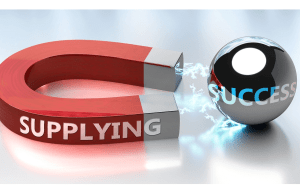

Supply chain management companies are just some of the ones that can benefit from digitalization. Companies with cutting-edge technology but need to gain a background in the supply chain sometimes present the most promising chances.
That was the situation when DHL Supply Chain collaborated with Boston Dynamics. Automating the container unloading process was an important goal for both companies.
Boston Dynamics, a global leader in robotic technology, was confident their technology could meet this difficulty but needed a more in-depth understanding of supply chain operations the development required.
DHL Supply Chain contributed that experience as the two organizations embarked on a joint development effort that resulted in the Stretch™ robot.
When DHL Supply Chain initially started working with Locus Robotics, things were different. Locus possessed the technology but required a partner that could drive the fast deployment of the system to gain economies of scale and enable continuous optimization.
DHL Supply Chain is the largest customer of Locus’ robot-assisted picking systems after becoming a strategic partner.
Managing the Continuity of Supply
Managing connections with vendors and other service providers methodically is known as “supplier lifecycle management” (SLM). Supply chain risk may be reduced, supply chain dependability enhanced, and overall business objectives realized using SLM.
SLM entails managing the whole supplier relationship, from onboarding to continual monitoring and assessment. Among these include categorizing suppliers according to the effect they might have on the company, pinpointing and eliminating the threats they pose, and forging bonds of trust and cooperation with them.
There are several positive outcomes for businesses that use SLM.
- Reduced onboarding time and enhanced performance from suppliers
- The negative feedback
- Better coordination and cooperation with suppliers
- Businesses may better prepare themselves for the increasingly competitive global economy by investing in SLM.
Think About The Needs Of Today
Leveraging current resources to manage existing supply chain concerns and knowing how to decrease related risks might help prevent prospective issues from growing.
Controlling Stocks
Effective inventory management comprises adequate warehouse organization and placement, as well as adopting suitable inventory level tracking and control. This includes, among other authorities, a planned cycle count programme to maintain correct inventory levels, determining effective reorder points for essential goods and identifying suitable safety stock levels.
Analytics of Technology and Data


Manufacturing businesses may greatly benefit from using supply chain management software and data analytics to increase transparency and the quality of their business decisions. Here is how they help to improve the efficiency and effectiveness of the supply chain:
- Material and product tracking in real-time allows for faster resolution of any delays or bottlenecks that may arise.
- Data analytics are vital in enhancing the precision of forecasting and demand planning, ensuring optimal inventory levels, and mitigating the risks associated with excessive or insufficient stock by converting raw data into actionable insights. Data analytics optimizes inventory management for organizations.
- Improved vendor management allows for more fruitful negotiations and monitoring of supplier performance.
- Overall, better visibility and data-driven insights contribute to considerable cost reductions, proactive risk mitigation methods and enhanced collaboration across the supply chain stakeholders.
Ultimately, these skills enhance customer satisfaction through timely product delivery and more responsive support.
Seek Perfection
Businesses may increase productivity, customer happiness, and brand value by working to perfect their supply chain.
- Lean Principles: Leading firms actively employ poor practices to decrease waste and increase overall process efficiency. These practices include value stream mapping, standardized work procedures, visual management tools and comprehensive quality management concepts.
- Investors and consumers place a high value on environmental, social, and governance (ESG) factors. As a result, businesses are under pressure to implement sustainable practices to help comply with regulatory requirements and reduce environmental impact in their supplier networks with government regulations.
- Although it may seem like stating the obvious, quality control is essential in reducing faults and customer complaints across the supply chain.
- Markets and other external factors are in a constant state of flux. Therefore, businesses must regularly analyze and benchmark their supply chain operations to stay competitive.
- Collaboration: To optimize supply chain performance, management must develop cooperation between suppliers, manufacturers, distributors and retailers to increase Communication and coordination.
Invest in the Growth of Your Staff.


Anyone who works in supply chain management knows that keeping things going smoothly and efficiently is like constantly navigating a maze. When dealing with high-value, easily damaged, or quickly spoiled items, every day presents a new set of challenges.
In addition to a structured training programme, effective methods for developing employees also make use of coaching, mentorship, work rotation, and scenario-based instruction. All of this aids workers in comprehending not just the mechanics of procedures but also their effects on the company as a whole.
Optimize Your Return Management.
A great SCM strategy features an effective returns management system, as it is necessary to give returns as much attention as sending out stock.
Effective returns management allows you to swiftly and easily re-process or re-manufacture returned items so that you can go back to serving your consumers.
Keeping tabs on everything is the first order of business. Even if only one jumper in cargo is destroyed, if 10 are damaged within two days, it may be a sign that the entire shipment is flawed. Paying attention to the details might reveal hidden issues.
Excellent SCM may benefit greatly from cutting-edge technology, as was just discussed. Use the top software available and make sure it works with the current infrastructure.
In order to be effective, returns prevention software must have access to crucial company data. Make sure its application programming interface (API) allows for seamless connection with your inventory and retail management programs.
A solid procedure for handling returns should not be undervalued. It’s more than just a boon to your company’s bottom line. It may have a significant effect on how customers view the brand, the business, and the products.
Worst 5 Practises in Supply Chain Management
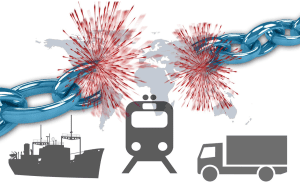

1, ineffective Communication
There might be several causes of ineffective Communication among stakeholders. However, these are typically based on assumptions. It’s important to keep in mind that different stakeholders will have varying reporting and information delivery frequency expectations.
Conflicting supply chain goals are another common cause of communication breakdowns. The supply chain might be slowed or stopped entirely without a common goal and method for communicating information.
2. A Failure to Coordinate Efforts Across Divisions
Working as a team is essential for effective operations everywhere, but especially in supply chain management, where problems with Communication may have a devastating impact on productivity.
Both tension and disorganization can result from a lack of cooperation between different groups or teams. Inefficiency will result from the possibility of data duplication or omission, both of which might have been avoided by cooperation.
3. Inadequate Handling of Stock
Supply chain efficiency relies on accurate inventory counts; therefore, keeping tabs on stock is essential. Overstocking or understocking supplies, both of which can cause significant difficulties that are costly and slow down the supply chain, can be avoided in this way. Inadequate planning and antiquated inventory management tools are to blame for this situation.
4, Inconsistent Supply Chain Planning and Forecasting
In order to properly account for stock levels, stakeholders, and possible threats, supply chain planning must be both constant and frequent. Not using modern forecasting tools increases the likelihood of incorrect, inadequate, or irrelevant findings.
5. Failing to Use Technology to Enhance Workflows
When you don’t make use of data and analytics as well as automated solutions, you spend time performing jobs that your rivals may not have to deal with at all.
The utilization of the Internet and analogous technologies can effectively serve as a means to enhance efficiency and save valuable time. That can automatically track down supplies and maintain machinery.
Most Impressive Supply Chain Management Strategies Examples
The most effective supply chains share a number of commonalities in their management that make them stand out from the rest of the pack. Big data proactivity, inventory management optimization, responsiveness to customer needs, process implementation modification, energy efficiency, and regulatory compliance are all necessary elements.
Unilever
Unilever, headquartered in the United Kingdom and the Netherlands, is the third biggest corporation of its sort and produces food, drinks, personal care products, and cleaning chemicals, among other things. Unilever implemented a major supply chain management overhaul at the start of 2000 as part of a five-year growth strategy.
McDonald’s
McDonald’s, the industry-leading fast food chain, has a framework in place where success is shared and value is transferred between the company and its suppliers, earning it top marks in supply chain management rankings.
Inditex
One of the largest apparel retailers in the world, Inditex owns eight different brands and has almost 7,300 locations throughout the globe. With over 1,700 suppliers and over 6,300 facilities in over 50 countries, the firm has been able to achieve remarkable success because of its adaptable supply chain.
Cisco’s Corporate
Cisco Systems has revolutionized the IT and networking industry with its cutting-edge computer architecture. Relies on a vast and varied supply chain that stretches all over the world. In an effort to expand its capabilities and react more quickly to market changes, the company has revamped its supply chain management.
H&M
H&M, a clothing shop with locations all over the world, has achieved unprecedented levels of commercial and financial success. The company’s success with stock control may be attributed in large part to its dependence on efficient and integrated systems for some of the key components of its supply chain, such as inventory management.
The Intel
Intel has invested heavily in making its supply chain more agile and integrated to better fulfil customer needs, despite the fact that manufacturing technologies and operations remain at the core of the company’s business.
Nestlé
With over 2000 brands and a presence in almost 200 countries, Nestlé is the largest food and beverage corporation in the world. The multinational food company started a crowdsourcing project last year to get its supply teams involved in finding answers to problems and ideas for new business last year.
Nike
When it comes to exporting production, Nike is ahead of the curve with its footwear and athletic gear. Nike has achieved exceptional supply chain performance, with over 700 plants situated across 42 countries worldwide.
Colgate-Palmolive


Colgate-Palmolive has undergone a massive supply chain reorganization over the past decade, shifting production from localized areas to countries all over the world. The global consumer goods corporation saved almost $4 billion by addressing inefficiencies in its supply chain and implementing reforms.
Starbucks
Starbucks’ supply chain provides a lot of room for inefficiency and wasteful spending simply because of its massive scale. Despite having 15,000 locations in more than 50 countries, the supply chain runs more smoothly than you might imagine because of the renowned coffee company’s commitment to sustainability and efficiency. The reason for this is that Starbucks uses some of the most important best practices in supply chain management.
Pepsi
PepsiCo is the parent firm of hundreds of well-known and adored consumer products; the company is now among the world’s largest food and beverage corporations. The firm has done a terrific job converting its supply chain capability to accommodate more complicated goods to match customer preferences to choose healthy food over soda and snacks.
3M
3M is a multinational corporation that produces and sells a diverse range of products, including adhesives, laminates, electronic materials, medical items, optical films, dental and orthodontic devices, and more. The corporation began a comprehensive overhaul of its supply chain in 2012, transitioning from a linear, analogue structure to a technology-based one.
Johnson & Johnson
Consistently improving their supply chain, the producer of pharmaceuticals, consumer packaged products, and medical devices made tremendous strides only last year.
Coca-Cola


Coca-Cola, the largest beverage firm in the world, boasts 21 billion-dollar brands, approximately 4,000 beverage options, and a global footprint that includes every country on Earth. Ninety-five per cent of drinks are produced in the same nation in which they are marketed. Companies can meet customer needs at lower costs now.
BASF
As the biggest manufacturer of chemicals in the world, German corporation BASF combines research and innovation to make chemical products that serve the society of today as well as the future. The corporation uses a mix of social responsibility and environmental protection in its production activities, and sustainability is at the centre of its supply chain management initiatives.
Schneider Electric
Connected technologies and solutions from Schneider Electric are designed with safety, reliability, efficiency, and sustainability as their top priorities. CEO and President Annette Clayton explains that the supply chain is more important than ever because “as a purpose-led company, we have the responsibility to bring safe, sustainable, reliable, and connected energy to our customers.
Wal-Mart
The supply chain management of Wal-Mart, the multinational retailer and the United States’ number two employer is nothing short of a logistical and operational masterpiece. Our company has 11,000+ locations in 27 countries with an average inventory of $32 billion.
HP Inc.
While HP is best known for its printers and other IT products, the firm also has a strong commitment to sustainability for both itself and the global society, as seen by its excellent supply chain. HP plans to increase the number of factories participating in sustainability programmes from 200,000 to 500,000 by 2025.
L’Oréal
The French cosmetics giant L’Oréal has been at the forefront of supply chain innovation in recent years, making substantial progress towards key supply chain indicators at a faster rate than its competitors in the cosmetics and beauty industry.
Kimberly-Clark
Kimberly-Clark is a personal care company whose consumer products (mainly paper-based) are indispensable to practically every home. Every day, the company’s products are used by one out of every four people on the planet. The firm is committed to being an industry leader in sustainable and responsible supply chain practices and to doing so via the development of strong relationships.
BMW


BMW recognizes that the success of its BMW, Mini Cooper, and Rolls Royce brands depends on the expertise and dedication of its suppliers. BMW has adopted The BMW Group Supplier Sustainability Standard because it understands that the company’s capacity to operate and develop sustainably is dependent on the criteria that its worldwide supplier network adheres to.
Diageo
Diageo was the largest distiller in the world until only recently. The world’s largest producer of alcoholic beverages is investing heavily in local economies through its supply networks. Diageo’s plan for establishing sustainable supply chains centres on ethical sourcing, carbon footprint minimization, and the development of mutually beneficial relationships with farmers.
Lenovo
The Lenovo Group, a multinational Chinese technology corporation, is dedicated to implementing the ideals and principles of responsible corporate citizenship through its supply chain management practices. Lenovo is better equipped to report on current standings and make future business decisions with over 25 important metrics that assess supplier transparency, commitment, and performance.
Samsung
Samsung, a manufacturer of electrical goods based in South Korea, has excellent supply chain management. Samsung’s supply chain system monitors risk factors, provides programmes to boost its suppliers’ competitiveness, enhances working conditions, facilitates two-way contact with customers, and conducts on-site quality checks; as part of the company’s dedication to sustainability, measures are being taken to guarantee that all products are manufactured in an environmentally responsible manner.
FAQs
In supply chain management, what should I do to be successful?
Keys to Supply Chain Management Success
- Find the appropriate folks.
- Form partnerships with crucial vendors.
- Coordinate across departments and business lines.
- Facilitate more constant Communication.
- Put the power of technology to good use.
- Hire professionals.
How about the supply chain manager’s hard skills?
- Technical Abilities of a Supply Chain Advisor
- Business Intelligence Solutions…
- Enterprise Resource Planning…
- The Dynamics of the Market…
- Strategy and analytics for the supply chain.
- Risk management.
- Management of Projects.
In what ways can I hone my supply chain knowledge?
Follow these guidelines for success as a supply chain consultant:
- Earn a diploma.
- Pick an area of expertise. Numerous supply chain experts specialize in only one subset of operations.
- Try to get an internship.
- Gain practical experience…
- To that end, think about going on to graduate school.
- Build your contact list.
- Consider a certification.
- Communication.
Which function is the most important in a company’s supply chain?
Transparency and openness: Transparency and visibility all the way through the supply chain are essential for its success. Inventory levels, demand trends, and supplier performance may all be monitored in real-time with the use of technological solutions, such as supply chain management systems and data analytics.
What exactly does an SCM expert do?
Manages and optimizes a company’s supply chain by coordinating shipments and identifying areas for process improvement. Contains orders, including pricing and quantities, as well as inventory levels, demand projections and adjustments, and problems encountered in the supply chain.
What exactly does an SCM do?
Jobs in Supply Chain Management. A career in supply chain management might entail a wide variety of tasks. Due to the multifaceted nature of the supply chain, supply chain specialists can specialize in a wide range of fields, from inventory management and shipping to customer service and sales.
What distinguishes supply chain management from logistics?
Distinctive features of SCM that set it apart from logistics are:
Logistics is concerned with how to get products to consumers quickly and cheaply. Management of the supply chain ensures that efficient material flow to consumers is provided by suppliers, manufacturers, distributors, wholesalers, and retailers.
Visit blogkingworld.com for more professional articles.




